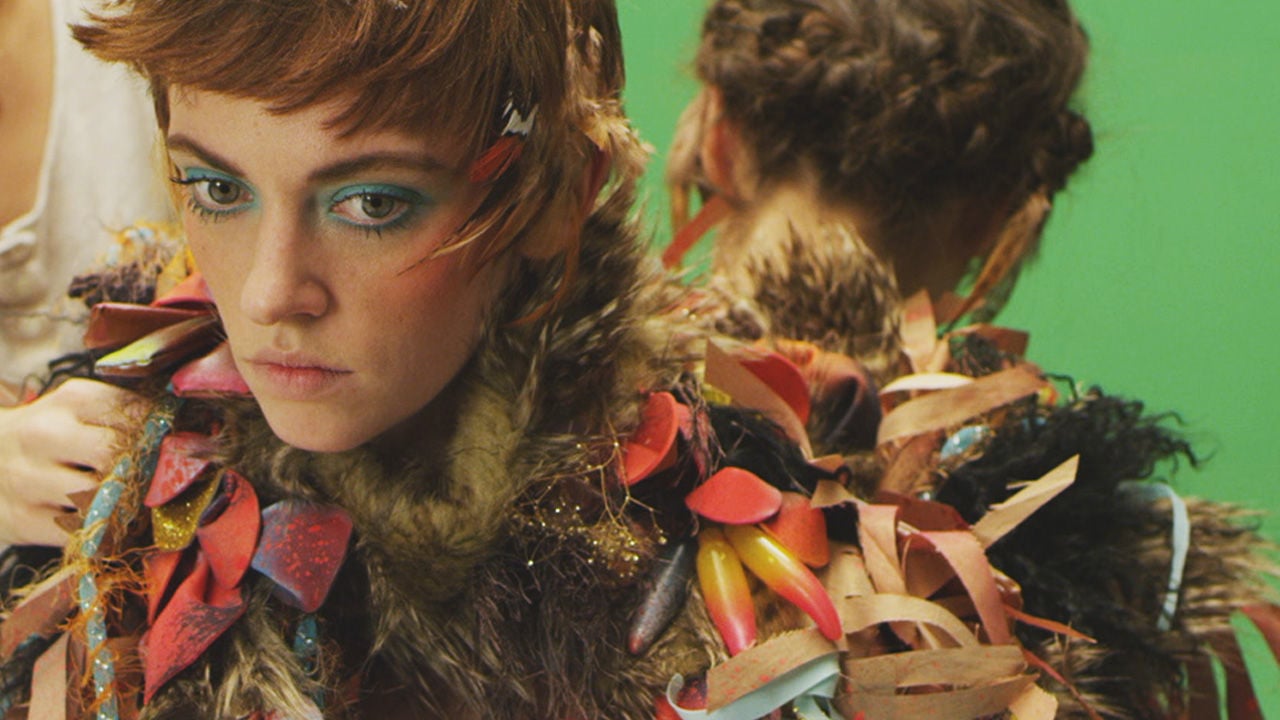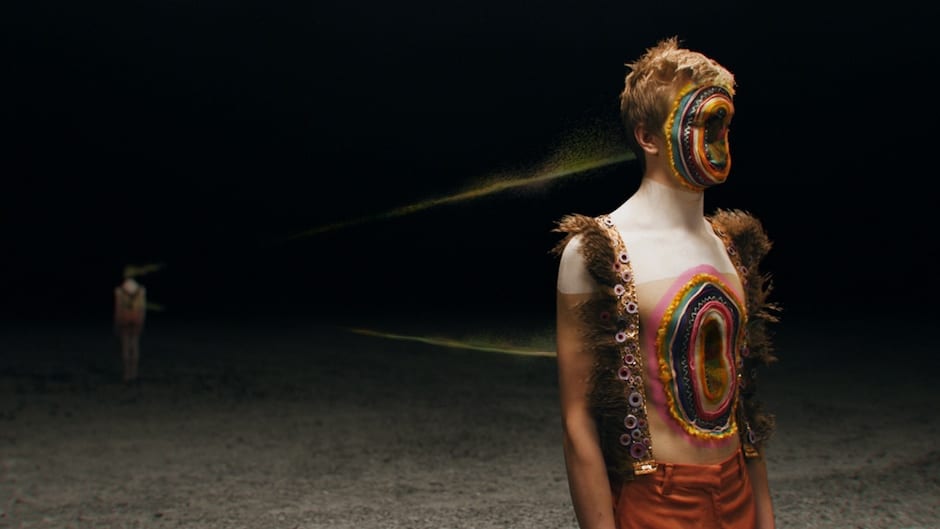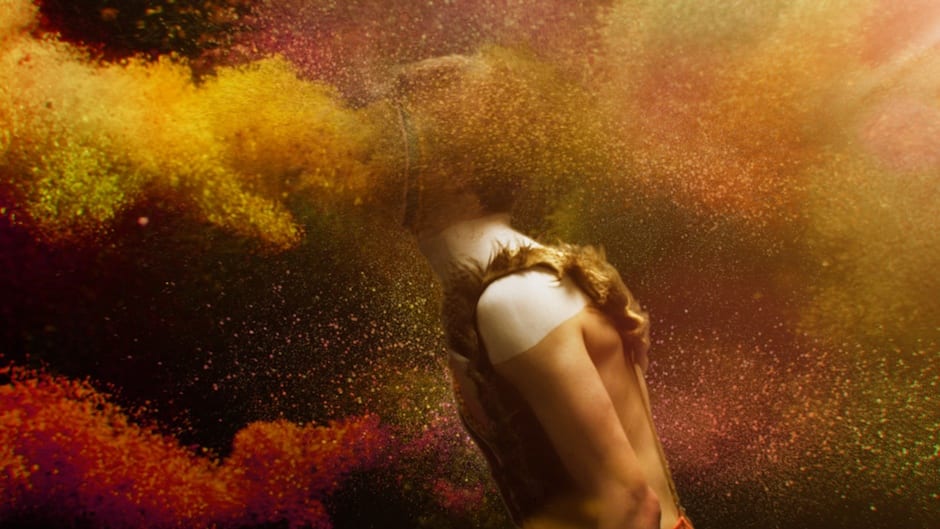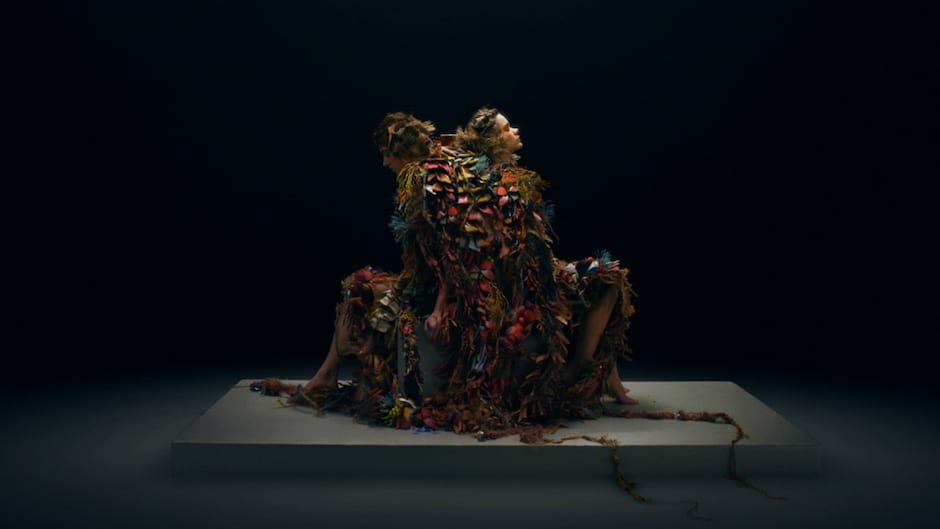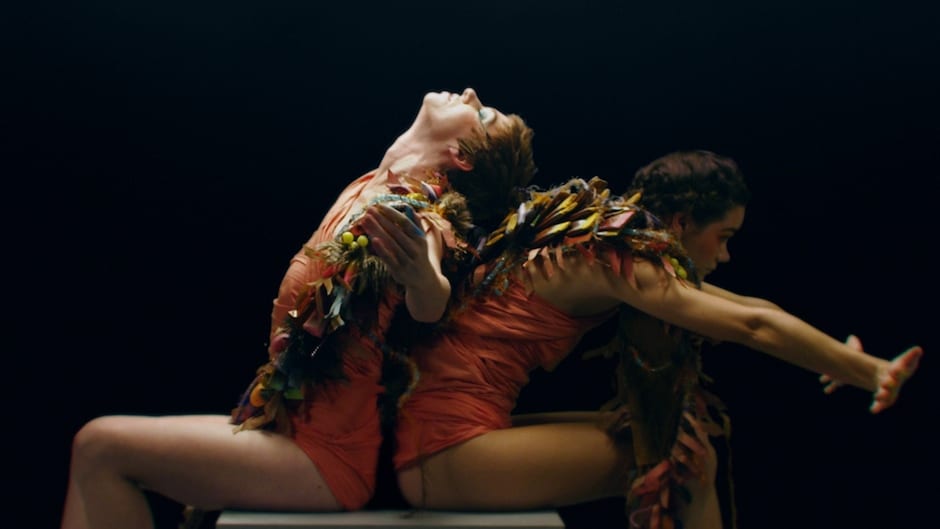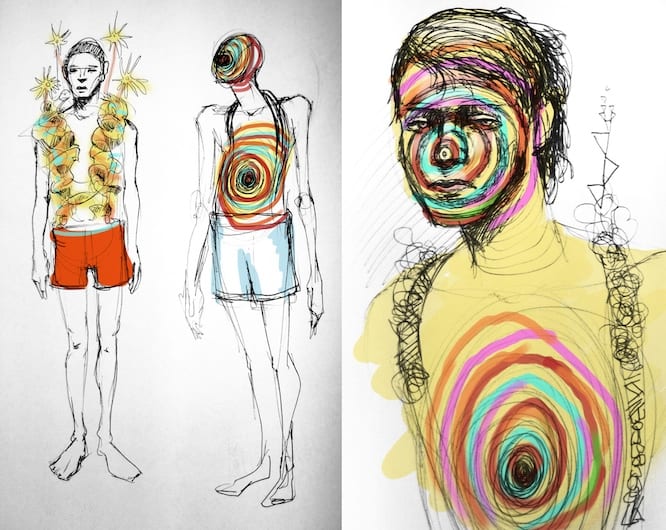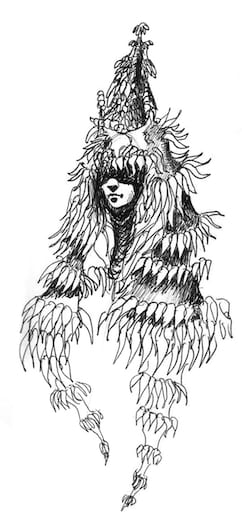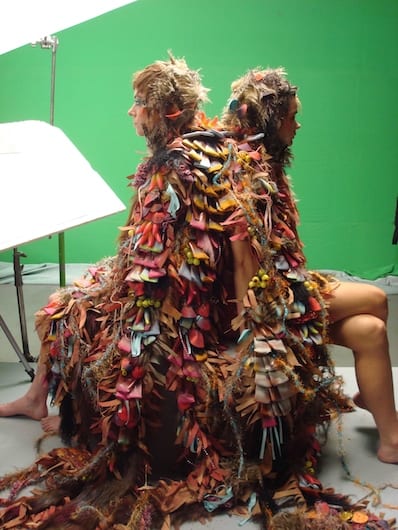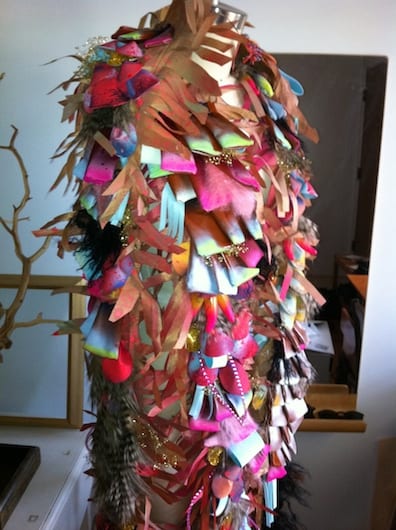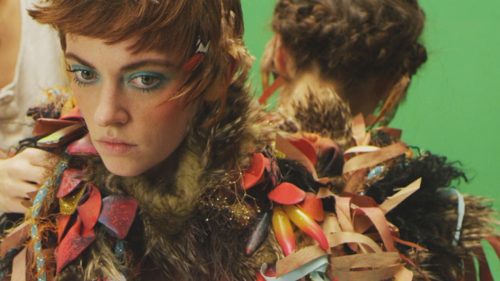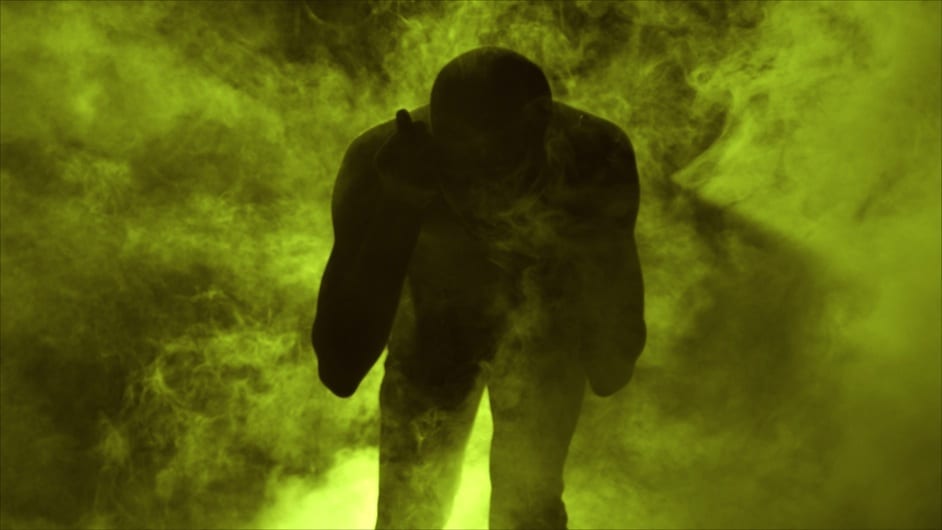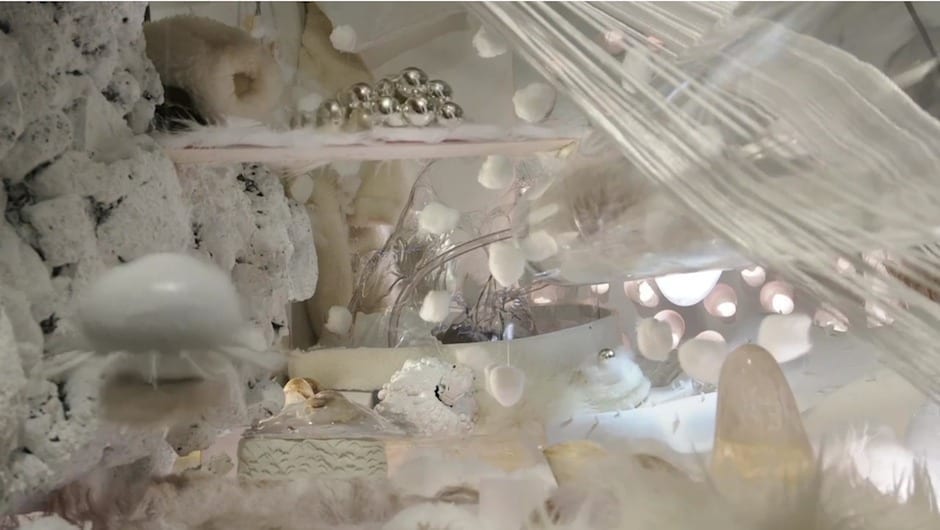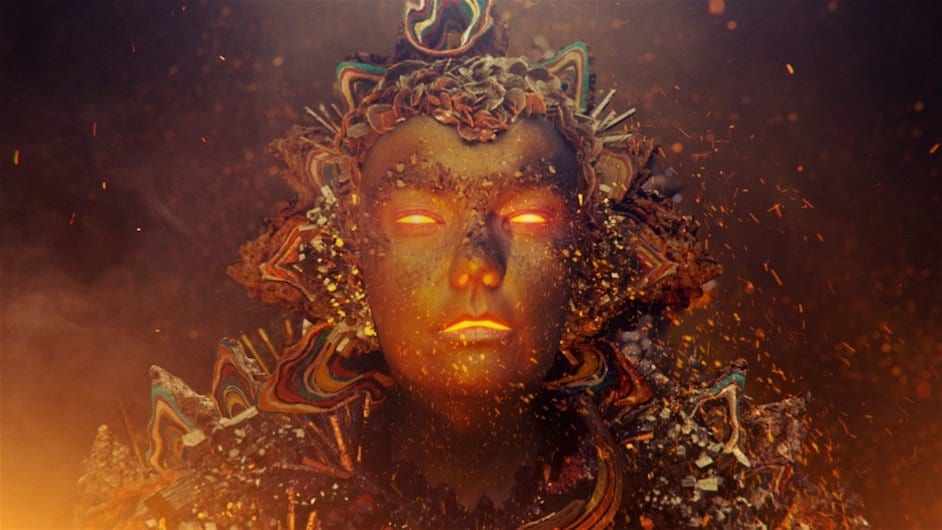MY EYES JUST MELTED… No, they’re not our words, but the rather apt comment proffered by one of the 655k people who’ve so far viewed the mesmerizing ten-minute short Solipsist, directed by Andrew Huang, on Vimeo.
Solipsist burst into our inbox last week in a flurry of “you’ve GOT to watch this” email headers. Waiting for the hype dust to settle we bided our time and ignored the hit counters steady upward climb, finally tucking in to view the film earlier this week with as much objective distance as possible. The wait was well worth it.
Drawing together exquisite art direction and costume design Solipsist earns the oft overused adjective beguiling. It’s otherworldly. Enchanting. And far better seen than read about…
We spoke with Andrew about the project and fell in love with it even more.
What’s the elevator version of your biography?
Went to art school, made a film that went viral on YouTube. J.J. Abrams gave me a phone call and said I should direct. And I said yes! Been making commercials and music videos since 🙂
You’re no stranger to viral success are you – your short Doll Face racked up 5m hits on YouTube alone right? What do you think it was about that film that people connected with?
I think the film touched on the never ending controversy between beauty culture and the effects it has on body image and self esteem. This struggle is something we all relate to on some level, and whether we like it or not I think we are always somehow complicit with beauty culture that is fed to us through entertainment, fashion and advertising, etc. We worship it and rebel against it simultaneously and I think this narcissistic contradiction resonates in all of us.
And now you’ve done it again with Solipsist. Tell us how the project came about?
I was taking a break from work and was getting tired of doing just branded content. I was getting a lot of pressure to do more narrative work, and I was just like screw it. I needed to do something personal. I began sketching more at home and one day it just came to me all at once while I was driving through LA. I knew I wanted to make several vignettes in which two or more characters were struggling to converge with one another. I illustrated a few scenes, picked the best three and devised a classical narrative structure from there. I then called up my favorite crew to work with and we began shooting in early 2011.
How closely were the production designer Hugh Zeigler and costume designer Lindsey Mortensen involved in developing the concept with you?
Hugh and Lindsey are the best. I turned to them because they are phenomenally talented and brought the freshest ideas to the table that I could never come up with. Early in preproduction Hugh, Lindsey and I took trips to East Downtown LA scouring every toyshop and fabric store for the most surprising and interesting stuff to cannibalize and play with. Hugh is a brilliant painter, a RISD graduate who really knew how to pick the coolest, weirdest materials to experiment with, everything from fish bait to LEDs covered in rubber. Hugh’s designs and material choices were integral to the development process, and in particular we had the task of testing Hugh’s creations underwater, which presented a whole new set of challenges.
Lindsey is a good friend of mine who studied at Central Saint Martins and FIDM and made these beautiful cage-like structures in her past work that cued me in that she was perfect for this project. We collaborated closely to craft a look for the garments that felt both organic and sci-fi but also honest in its presentation. We wanted to make sure that the alien appearance of the costumes didn’t belie the fact that we were ultimately portraying a costume made of yarn, feathers and everyday craft materials, not fleshy latex or slimy makeup FX. This duality kept the wardrobe in the arty, fashion realm and Lindsey spent many late nights meticulously crafting the wardrobe in a way that navigated this balance beautifully. In short, I couldn’t have pulled this off without them!
Where did the inspiration for the costume come from? There are elements of Bjork in there but also a touch of Jim Henson!
Lindsey and I were looking at all kinds of things, everything from coral reefs and slime molds to Tibetan costumes and Balinese ceremonial outfits. I was specifically referencing nudibranchs, beautiful sea slugs that have feathery tendrils on their backs as inspiration for the girls’ costumes in the beginning. We also looked closely at biological illustrations by Ernst Haeckel and work by contemporary artists like Yinka Shonibare, Nick Cave, Lucy MacRae and Spartacus Chetwynd for inspiration. Jim Henson has always been a biggie for me. I like how he always chose materials based on how they flow and move to enhance a character’s animation.
Lindsey worked hard to design costumes that were meant to be puppeteered and layered in between takes, so this attention to movement was very important. Lindsey also came up with terrific ideas for the dissolving man’s makeup and gold / fur layered suspenders, which had an almost a regal, gilded look. I think you could say there’s a little Tarsem Singh thrown in there as well.
When and where did you shoot the film?
We shot the film in January 2011 in two days at a small stage in the Valley. Post-production took nine months in between my other commercial and music video work.
Did you shoot most of the film in-camera with stop motion and puppetry or was there a lot of post involved?
Nearly everything you see was shot practically in-camera, then collaged and composited together in post. There was quite a lot of post involved to remove the green screen and layer the elements to make everything feel integrated. The only pure CG effects in the film were the tendrils covering the girls’ faces and some of the foreground particle effects at the end.
Does the film have a clear meaning for you? Or is it more of an abstract experiment with beauty?
For me this film is about bodies. Our bodies are these things that we can’t escape yet we are always trying to connect with things beyond ourselves – other people, ideas, nature. This struggle to exist beyond our corporeal selves and connect with each other is central to each segment of the film, which features characters wrestling to converge with one another. Bodies are these really malleable, transient things that are constantly changing, so I think impermanence is also a big theme of the film. So in short, yes, this film is filled with meaning for me!
There’s a definite streak of nature running throughout your other films too. Why is that?
I think drawing inspiration from nature is my way of rediscovering the most basic joys I got as a kid but now in adulthood. As a teenager my work got really dark and I made a lot of crappy angry juvenile work. The older I get the more I’m seeking out more universal sources of creativity, and nature is unequivocally the best source of inspiration for any artist. I can’t get enough of it.
Anything else you’d like to share?
I’m currently working on a new series of video portraits involving facial sculptures interacting with colliding digital extensions. I hope to have this finished by fall of this year, so stay tuned for more.

